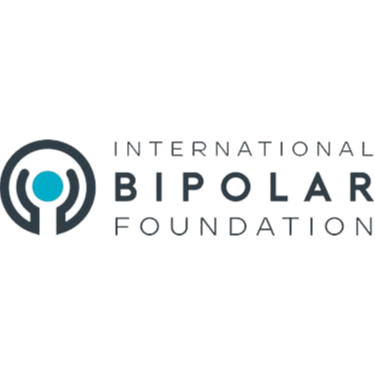Dr. Judith Orloff helps us understand the power of empathy so we can utilize and honor it in our lives.
YOU MIGHT ALSO LIKE
CLEAR ALL
BY TEACHER
BY TYPE
FILTER

TOPIC
- Well-Being (22)
- Identity (21)
- Relationship Challenges (17)
- Living as an Empath (15)
- Communication Skills (14)
- Romantic Relationships (12)
- Child’s Autism (11)
- Highly Sensitive People (11)
- Self-Discovery (11)
- Parenting (10)
- Young Adult Well-Being (10)
- Relationship with Time (9)
- BIPOC Well-Being (8)
- Growth Mindset (8)
- Creative Well-Being (7)
- Depression (7)
- Disabled Well-Being (7)
- Learning Styles (7)
- Work Challenges (7)
- Autoimmune Disease (6)
- Connection (6)
- Emotional and Mental Health (6)
- Habits of Mind (6)
- Happiness (6)
- Identity Shifts (6)
- Imagination and Creativity (6)
- Altered States (5)
- Anxiety (5)
- Belonging (5)
- Brain Health (5)
- Child’s ADD/ADHD (5)
- Dementia (5)
- Friendship (5)
- Meditation (5)
- Neuroplasticity (5)
- Psychedelic Research (5)
- Women’s Well-Being (5)
- Black Well-Being (4)
- Consciousness (4)
- Emotional Intelligence (EQ) (4)
- Empathy (4)
- Fellowship and Community (4)
- Household Labor (4)
- Intimacy (4)
- Mindfulness (4)
- Perception (4)
- Racial Identity (4)
- Search for Purpose (4)
- Self-Esteem (4)
- Trauma (4)
- Aging (3)
- Caregiver Well-Being (3)
- Child’s Emotional Growth (3)
- Child’s Trauma (3)
- Children’s Well-Being (3)
- Chronic Health Conditions (3)
- Climate Change (3)
- Compassion (3)
- Connection with Nature (3)
- Decision Making (3)
- Diet and Nutrition (3)
- Healthy Eating (3)
- Illness and Injury (3)
- Intuition (3)
- Memory (3)
- Mindfulness Meditation (3)
- Nonbinary Well-Being (3)
- Physical Health (3)
- Polyvagal Theory (3)
- Racism (3)
- Resilience (3)
- Self-Acceptance (3)
- Sleep (3)
- Social Presence (3)
- Social Responsibility (3)
- Speaking Your Truth (3)
- Transgender Well-Being (3)
- Values (3)
- Work-Life Balance (3)
- Access to Education (2)
- Authenticity (2)
- Community Healing (2)
- Compassion Meditation (2)
- Cross-Cultural Dynamics (2)
- Discrimination (2)
- Exercise (2)
- Family Acceptance (2)
- Family Dynamics (2)
- Focus (2)
- Generosity (2)
- Gratitude (2)
- Inflammation (2)
- Inspiration (2)
- Ketamine (2)
- Kindness (2)
- Latinx Well-Being (2)
- Leadership (2)
- Letting Go (2)
- LSD (2)
- Marriage (2)
- Mind-Body Connection (2)
- Neuropsychology (2)
- New Relationships (2)
- Offering Support to Others (2)
- Othering (2)
- Personal Development (2)
- Positive Thinking (2)
- Problem Solving (2)
- Productivity (2)
- Racial Discrimination (2)
- Relationship with Money (2)
- Retirement (2)
- Self-Actualization (2)
- Self-Care (2)
- Self-Expression (2)
- Self-Healing (2)
- Self-Mastery (2)
- Self-Worth (2)
- Sex (2)
- Stress (2)
- Transitions (2)
- AAPI Well-Being (1)
- Activism/Service (1)
- Adaptability (1)
- Anger Management (1)
- Athlete Well-Being (1)
- Awareness (1)
- Body Mapping (1)
- Boundary Confusion (1)
- Buddhism (1)
- Building Character (1)
- Building Culture (1)
- Chronic Anxiety (1)
- Clinical Depression (1)
- Collaboration (1)
- Confidence (1)
- Cross-Cultural Parenting (1)
- Curiosity (1)
- Death and Dying (1)
- Death or Loss of a Loved One (1)
- Disconnection (1)
- DMT (1)
- Dreamwork (1)
- Ego Dissolution (1)
- Embodiment (1)
- Empowerment (1)
- Entrepreneurship (1)
- Epigenetics (1)
- Fear (1)
- Female Friendship (1)
- Finding Meaning (1)
- Forest Bathing (1)
- Forgiveness (1)
- Gender Identity (1)
- Guilt (1)
- Honoring Emotion (1)
- Hypnosis (1)
- Incarceration (1)
- Indigenous Well-Being (1)
- Integrative Medicine (1)
- Journaling (1)
- Kundalini Yoga (1)
- LGBTQIA Relationships (1)
- LGBTQIA Well-Being (1)
- Loneliness (1)
- Longevity (1)
- Loss of Partner/Spouse (1)
- Lovingkindness (1)
- Lovingkindness Meditation (1)
- MDMA (1)
- Men’s Well-Being (1)
- Mental Health Challenges (1)
- Military to Civilian Re-entry (1)
- Misophonia (1)
- OCD (1)
- Optimism (1)
- Patience (1)
- Positive Psychology (1)
- Pregnancy and Childbirth (1)
- Psilocybin (1)
- Psychoanalysis (1)
- PTSD (1)
- Racial Healing (1)
- Racial Justice (1)
- Rest (1)
- Science and Spirituality (1)
- Self-Development (1)
- Self-Realization (1)
- Self-Reliance (1)
- Shadow (1)
- Shame (1)
- Social Anxiety (1)
- Social Justice (1)
- Social Psychology (1)
- Soul Mission (1)
- Spiritual Growth (1)
- Spirituality and Health (1)
- Stress Management (1)
- Talk Therapy (1)
- Tibetan Buddhism (1)
- Time Management (1)
- Trauma Healing (1)
- Trust (1)
- Veteran Well-Being (1)
- Wake-Up Calls (1)
- Whiteness (1)
- Yoga (1)
FILTER

TEACHER
- David Eagleman (2)
- Jill Bolte Taylor (2)
- john a. powell (2)
- Temple Grandin (2)
- Amy Morin (1)
- Anil Seth (1)
- Connie Zweig (1)
- Daniel Gilbert (1)
- David Perlmutter (1)
- Deepak Chopra (1)
- Elaine Aron (1)
- Erin Clabough (1)
- Light Watkins (1)
- Mark Manson (1)
- Martin Seligman (1)
- Oprah Winfrey (1)
- Rick Hanson (1)
- Robin Carhart-Harris (1)
- Sandra Ingerman (1)
- Stan Tatkin (1)
- The Dalai Lama (1)









